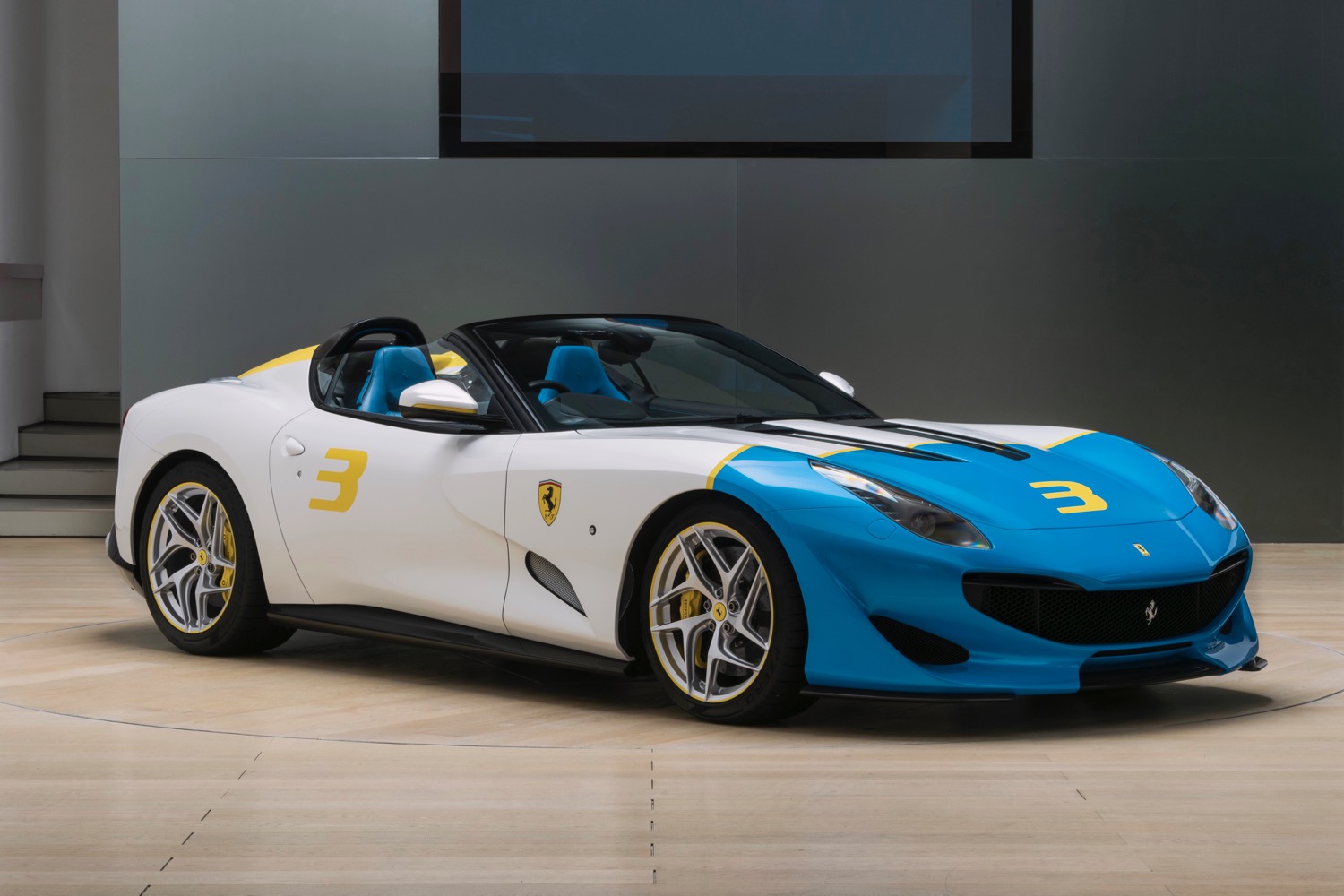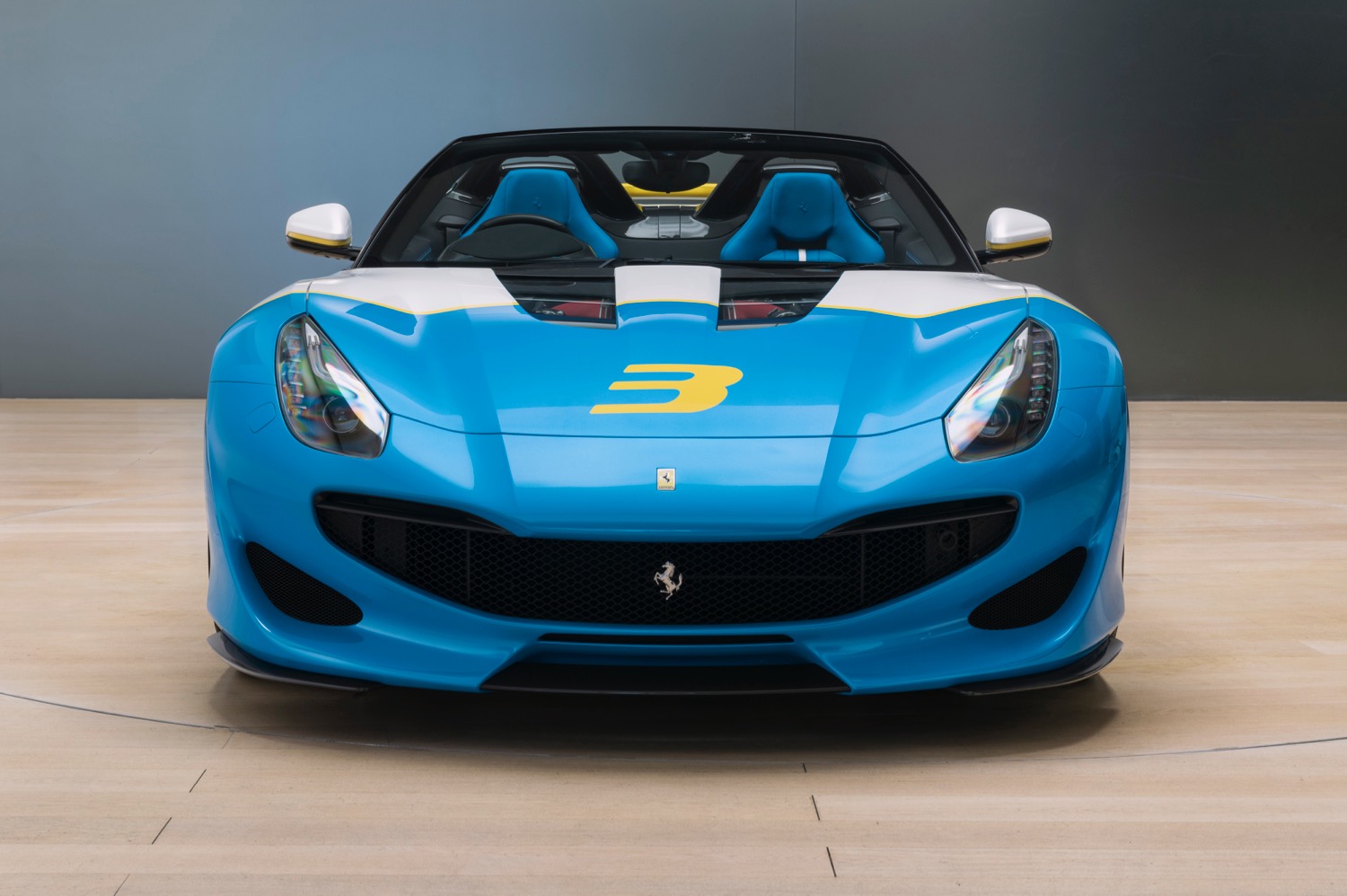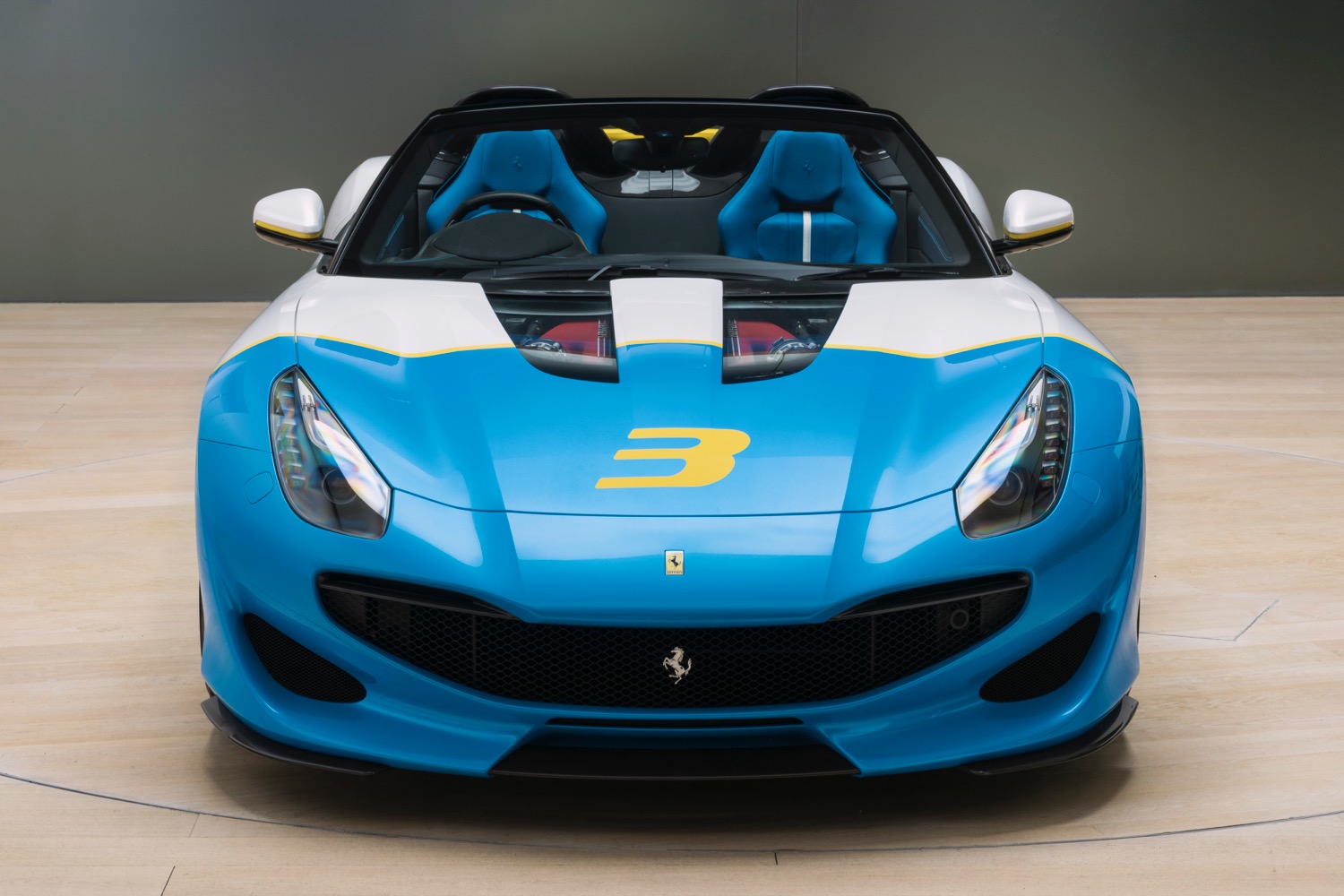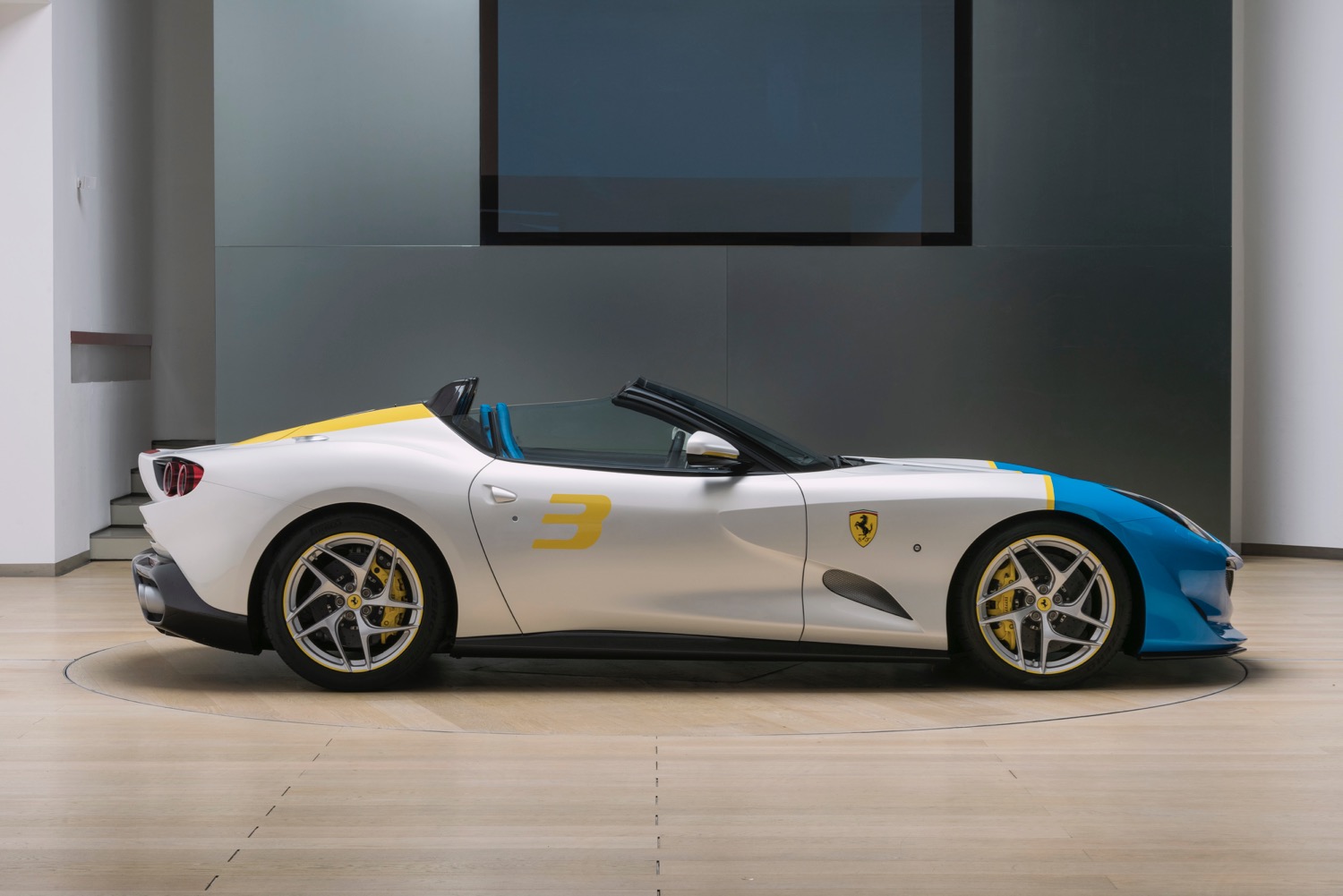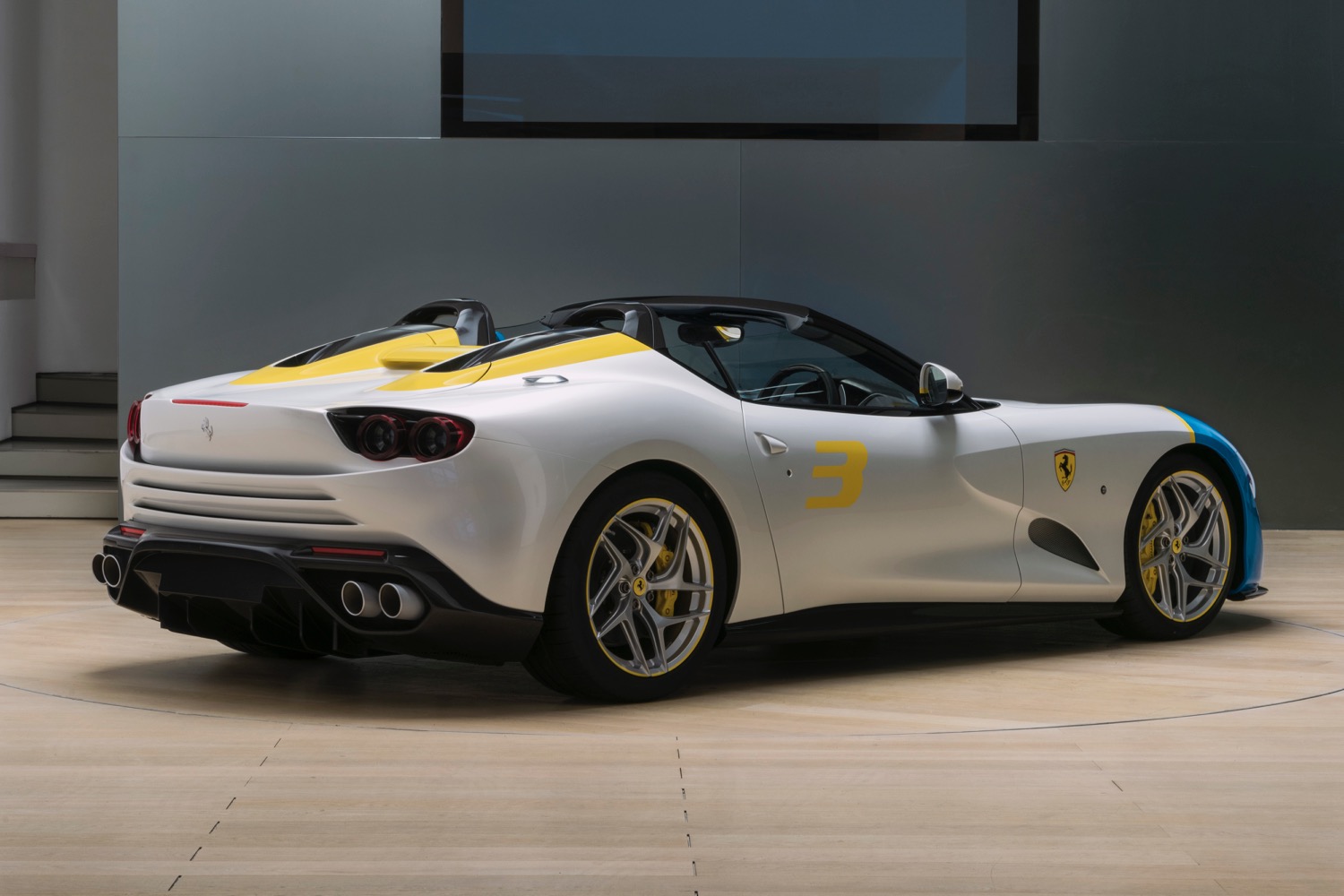Ferrari has made a habit of building one-off cars for its most loyal customers, which is how its new open-top sports car came to be. The Ferrari SP3JC was commissioned by a longtime customer with somewhat unusual tastes.
The SP3JC looks like it crashed into a truck full of paint, but that’s intentional. The combination of a blue nose over white bodywork with yellow graphics was inspired by the customer’s interest in Pop Art, according to Ferrari. The look is a bit jarring, but it’s not as crazy as the cars created by actual pop artists like Andy Warhol and Roy Lichtenstein for BMW back in the 1970s.
The car is based on the Ferrari F12tdf, one of the most potent front-engine V12 Ferraris ever made. Cars like this have been Ferrari’s specialty for decades, going back to classics like the 250 GTO. However, mid-engine models like the Ferrari 488 and the limited-edition LaFerrari hybrid tend to get more attention these days.
Turning a F12tdf into the one-off SP3JC required major surgery. The F12tdf was offered only as a coupe, but Ferrari removed the roof to make the SP3JC a convertible. It also cut some holes in the hood to show off the engine. Other aspects of the bodywork were restyled as well. The interior is trimmed in blue leather with a white insert, to match the exterior.
Ferrari didn’t mention any changes to the powertrain. The F12tdf left Ferrari’s Maranello, Italy, factory with a 6.3-liter V12 producing 780 horsepower and 520 pound-feet of torque. The car also featured a rear-wheel steering system, and was stripped of most creature comforts to save weight. Just 799 copies of the F12tdf were made, so this was a rare car even before Ferrari created the one-of-a-kind SP3JC.
Regular Ferrari production models like the F12tdf and the newer 812 Superfast aren’t exactly lacking in excitement or exclusivity. But some people always want more and, provided they are able to pay, Ferrari is happy to deliver. Everyone else gets to watch the seemingly endless parade of flashy one-off and special-edition cars that results from customers’ willingness to burn money on these four-wheeled indulgences.

